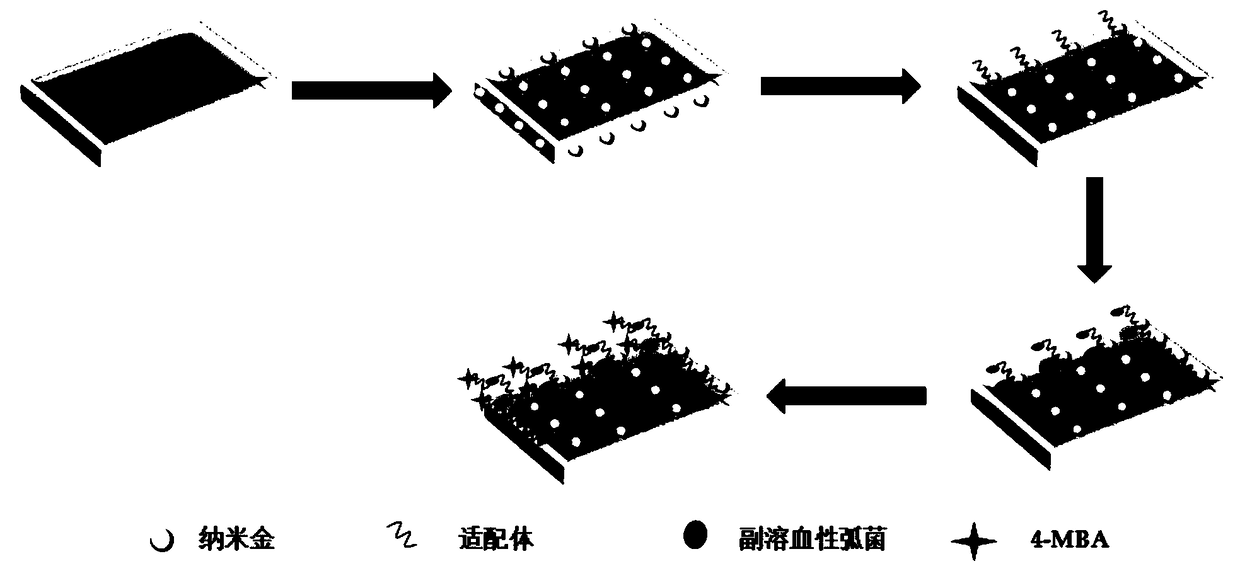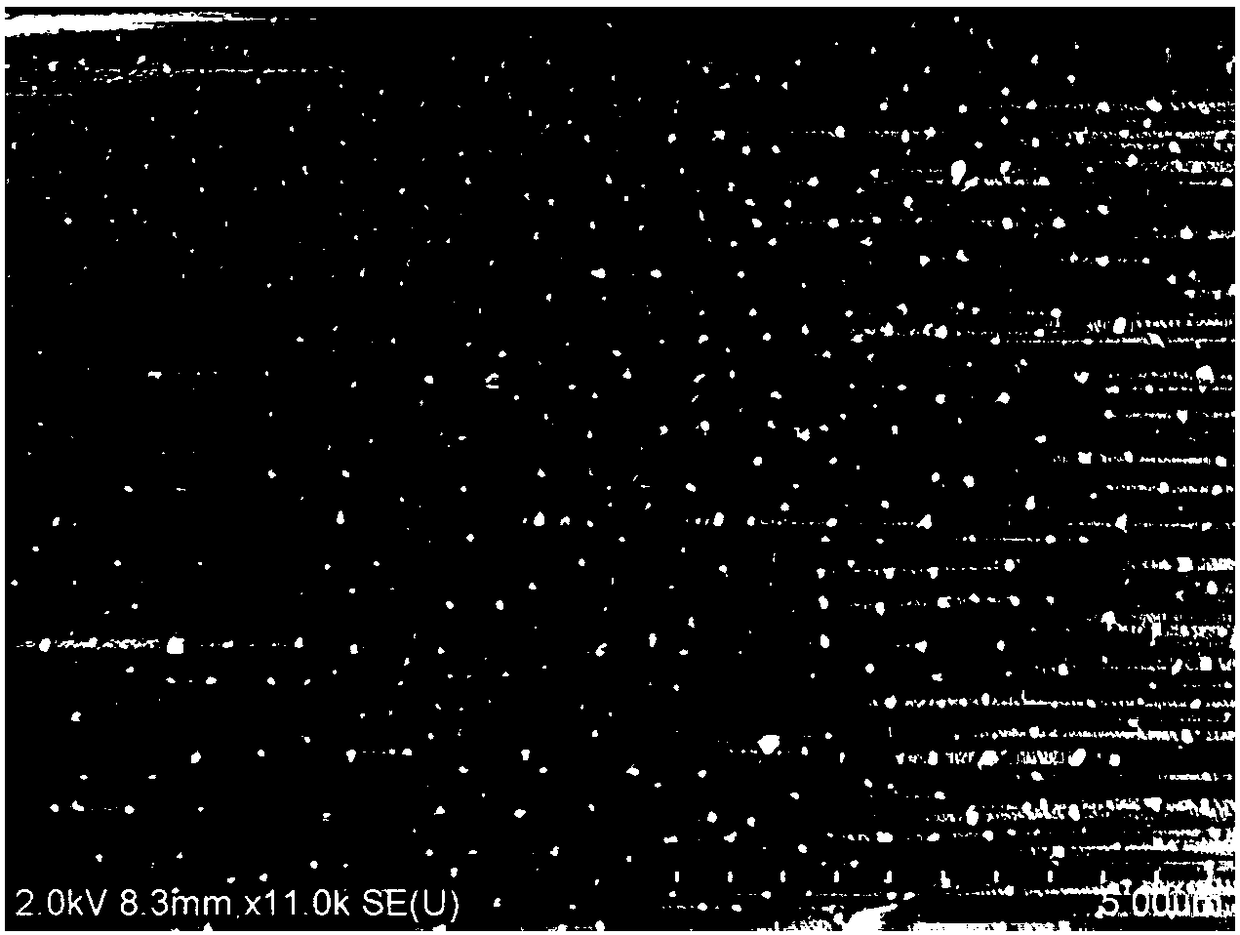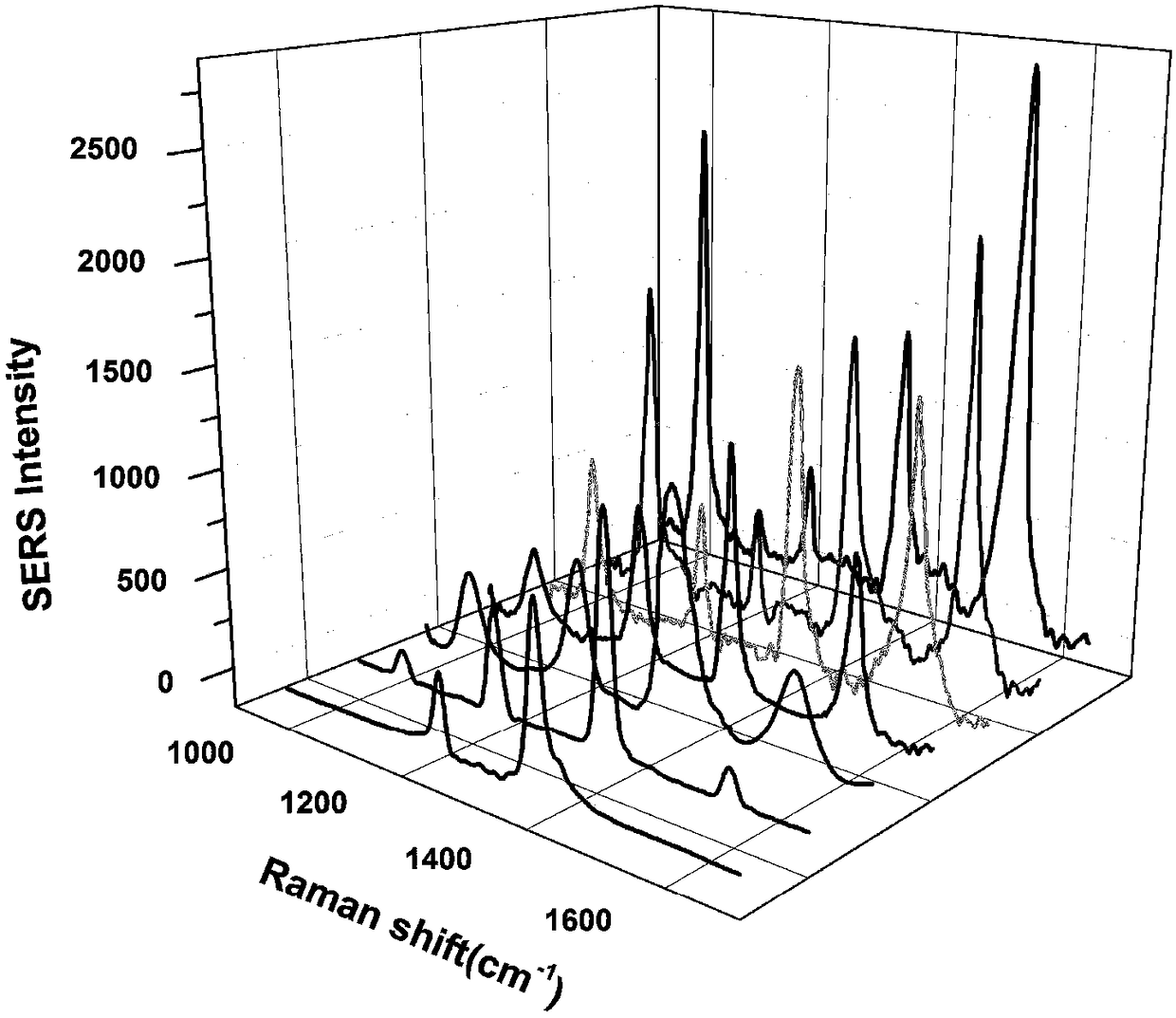Composite membrane sensor and method thereof for detecting vibrio parahemolyticus
A hemolytic vibrio and composite membrane technology, applied in the direction of Raman scattering, material excitation analysis, etc., can solve the problems of high substrate requirements, unfavorable rapid detection, cumbersome operation, etc., achieve low preparation cost, shorten detection time, The effect of broad application prospects
- Summary
- Abstract
- Description
- Claims
- Application Information
AI Technical Summary
Problems solved by technology
Method used
Image
Examples
Embodiment 1
[0029] Example 1: Preparation of composite membrane sensor
[0030] (1) Preparation of nano gold solution:
[0031] Take 0.5ml of 1% chloroauric acid aqueous solution, add 49ml of deionized water and boil for 5-10 minutes (120 rotation speed), then quickly add 0.5ml of 5% sodium citrate, and wait until the solution reacts to produce wine red to obtain a nano gold solution. Take 1ml of the prepared nano-gold solution, centrifuge at 12000RPM for 20 minutes, remove 750 μL of supernatant and resuspend to obtain a concentrated nano-gold solution, and store it in a refrigerator at 4°C.
[0032] (2) Preparation of APT-AU-PDMS composite membrane:
[0033] The main agent in PDMS: auxiliary agent (ie, polydimethylsiloxane prepolymer: curing agent) = 10:1. Put the main agent and fixative into the test tube and stir thoroughly. Stir until the size of the bubbles in the colloid is uniform, and there are no obvious large bubbles, it means that the main agent and fixative of PDMS have been mixed e...
Embodiment 2
[0039] Example 2: Establishment of a standard detection curve for Vibrio parahaemolyticus
[0040] Take the APT-AU-PDMS composite membrane, add 500μL of Vibrio parahaemolyticus solution of different concentrations, incubate for 1h on a shaker at 37℃ at 150 speed, then wash twice with PBS buffer, and then take 500μL of signal probe solution Instead of placing it on a 37°C shaker and incubating at 150 speed for 1 hour, the APT-AU-PDMS composite membrane was washed twice with PBS buffer, and the Raman intensity (excitation light source 633nm) was measured. Such as Figure 4 As shown, Vibrio parahaemolyticus at 1×10 1 -1×10 5 cfu / mL concentration range and 1590cm -1 The relative Raman intensity showed a good linear relationship, the linear equation was y=588.0x-495.8 (R2=0.90), and the lowest detection limit was 12cfu / mL. Specific as Figure 4 Shown.
PUM
| Property | Measurement | Unit |
|---|---|---|
| recovery rate | aaaaa | aaaaa |
Abstract
Description
Claims
Application Information
 Login to View More
Login to View More - R&D
- Intellectual Property
- Life Sciences
- Materials
- Tech Scout
- Unparalleled Data Quality
- Higher Quality Content
- 60% Fewer Hallucinations
Browse by: Latest US Patents, China's latest patents, Technical Efficacy Thesaurus, Application Domain, Technology Topic, Popular Technical Reports.
© 2025 PatSnap. All rights reserved.Legal|Privacy policy|Modern Slavery Act Transparency Statement|Sitemap|About US| Contact US: help@patsnap.com



